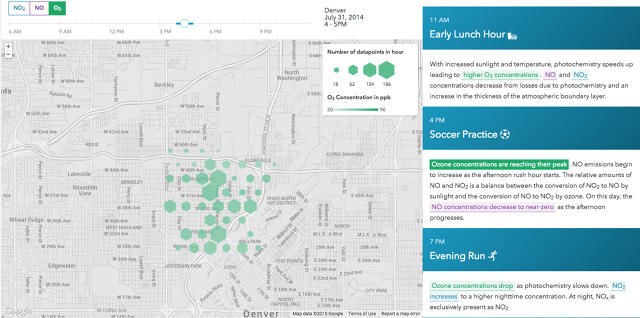Mapping Smog, Block with the aid of Block, the usage of Google side road View cars
sooner than you leave, in finding out the entire pollutants in order to choke you at your vacation spot.
July 30, 2015
whereas Google side road View cars cruise around city streets snapping photos, now they may be able to also double as cellular air high quality stations, tracking smog block by way of block.
Aclima, a San Francisco-based totally sensor startup, partnered with Google Earth Outreach to begin including sensors to the cars. As they force, the automobiles can take second-by means of-2d measurements of pollutants like ozone, black carbon, and methane.
In most cities, the U.S. Environmental safety agency depends on a small network of stationary sensors to trace bad air quality. nevertheless it’s laborious to grasp if the sensors are in the suitable places—and if they are missing vital areas. if you want to know the air high quality on your own boulevard, you probably can not get a precise resolution.
“cellular sensing allows us to get that kind of quick photograph of a whole city—in an effort to take into account what’s taking place at totally different spatial decision, across a complete swath of a city,” says Davida Herzl, co-founder and CEO of Aclima.

The team just lately piloted the tech in Denver, with the EPA’s lend a hand in planning out the most effective using routes. just like the networks in different cities, the current monitoring stations in Denver don’t seem to be densely disbursed. “What we saw is that you actually fill in the gaps, you really fill in the pixels of the image, and all at once you could truly see the range,” Herzl says. “you can see street by means of street or nearby via nearby, or alongside the parkway hall versus no longer.”
Over tons of of hours of riding, the automobiles amassed a hundred and fifty million data factors on pollution, and correlated that with EPA data to create a visual map of all of the invisible pollutants in the air. “we are able to see the air pollution as it’s transferring in the course of the city in actual time with the machine,” she says.
After proving that the machine might work, the startup plans to add sensors to any other fleet of street View vehicles within the Bay area to map out a bigger house, trying out how many automobiles it takes to paint a full image of the pollution. they will additionally work with scientists and nonprofits to figure out how very best to use the information they acquire.
in some way, they hope to add sensors to side road View vehicles around the world—and make the results on hand when somebody opens up a Google map. “that is the long term imaginative and prescient we share,” says Herzl. “To make this data as available because the weather or site visitors.”
[All Images: courtesy Google]
quick company , learn Full Story
(104)














